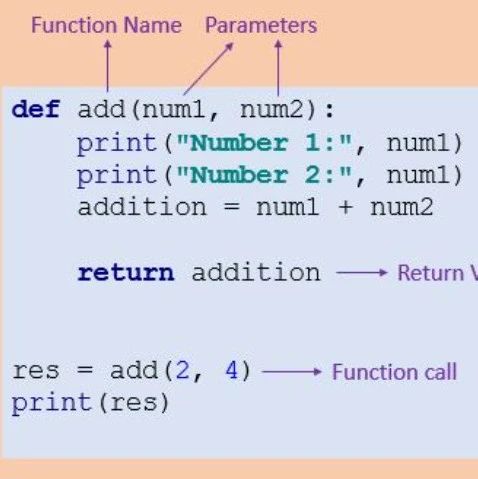如何总结pandas数据帧
如何总结pandas数据帧
提问于 2020-10-16 19:31:43
我有一个pandas数据框,其中包含大约20,xxx条公交车上车数据记录。数据集包含一个cardNumber字段,该字段对于每个乘客都是唯一的。有一个标识注册类型的type字段。有一个routeName列指定登机发生在哪条路线上,最后一个Date列标识登机发生的时间。我在下面提供了一个模拟数据框架。
df = pd.DataFrame(
{'cardNumber': ['999', '999', '999', '999', '901', '901', '888', '888'],
'type': ['trip_pass', 'transfer', 'trip_pass', 'transfer', 'stored_value', 'transfer', 'trip_pass',
'trip_pass'],
'routeName': ['1', '2', '2', '1', '20', '3', '4', '4'],
'Date': ['2020-08-01 06:18:56 -04:00', '2020-08-01 06:46:12 -04:00', '2020-08-01 17:13:51 -04:00',
'2020-08-01 17:47:32 -04:00', '2020-08-10 15:23:16 -04:00', '2020-08-10 15:44:45 -04:00',
'2020-08-31 06:54:09 -04:00', '2020-08-31 16:23:41 -04:00']}
)
df['Date'] = pd.to_datetime(df['Date'])我想要做的是总结传输活动。从路由1到路由2或从路由2到路由1的平均传输次数。在数据集中有11个不同的路由可以进行传输。
我希望输出看起来像这样(请注意,下面的输出不是从上面提供的示例生成的):
From | To | Avg. Daily
----------------------------------
1 | 2 | 45.7
1 | 3 | 22.6
20 | 1 | 12.2 回答 2
Stack Overflow用户
发布于 2020-10-16 21:16:44
以下代码适用于您提供的块数据。如果它在你的实际数据中不起作用,请让我知道。可能有更好的方法来做到这一点,但我认为这是一个很好的起点。
这里的总体思路是按乘客分组,以确定路线。然后,由于您需要日平均值,因此需要先按日期分组,然后再按目的地分组,以便计算日平均值。
# Define a function to get routes' relationship (origin vs destination)
def get_routes(x):
if 'transfer' not in x.type.tolist(): # if no 'transfer' type in group, leave it as 0 (we'll remove them afterwards)
return 0
x = x[x.type == 'transfer'] # select target type
date = df[df.cardNumber=='999'].Date.dt.strftime('%m/%d/%Y').unique()
if date.size == 1: # if there is more than one date by passenger, you'll need to change this code
date = date[0]
else:
raise Exception("There are more than one date per passenger, please adapt your code.")
s_from = x.routeName[x.Date.idxmin()] # get route from the first date
s_to = x.routeName[x.Date.idxmax()] # get route from the last date
return date, s_from, s_to
# Define a function to get the routes' daily average
def get_daily_avg(date_group):
daily_avg = (
date_group.groupby(['From', 'To'], as_index=False) # group the day by routes
.apply(lambda route: route.shape[0] / date_group.shape[0]) # divide the total of trips of that route by the total trips of that day
)
return daily_avg
# Get route's relationship
routes_series = df.groupby('cardNumber').apply(get_routes) # retrive routes per passenger
routes_series = routes_series[routes_series!=0] # remove groups without the target type
# Create a named dataframe from the series output
routes_df = pd.DataFrame(routes_series.tolist(), columns=['Date', 'From', 'To'])
# Create dataframe, perform filter and calculations
daily_routes_df = (
routes_df.query('From != To') # remove routes with same destination as the origin
.groupby('Date').apply(get_daily_avg) # calculate the mean per date
.rename(columns={None: 'Avg. Daily'}) # set name to previous output
.drop(['From','To'], axis = 1) # drop out redundant info since there's such info at the index
.reset_index() # remove MultiIndex to get a tidy dataframe
)
# Visualize results
print(daily_routes_df)输出:
Date From To Avg. Daily
0 08/01/2020 2 1 1.0这里,平均值是1,因为每组只有一个计数。请注意,只有"transfer“类型被考虑在内。没有它的,或者没有改变路线的,被进一步删除。
Stack Overflow用户
发布于 2020-10-17 11:47:40
如果我的问题是正确的,那么您希望从您的事件中获得行程的起点和终点,并且第一个事件与起点(路线名称)相对应,然后计算数据集中具有相同起点和终点的票证数量。
如果是这样的话,您可以这样做
# srot the dataframe so you can use first/last
df_sorted= df.sort_values(['cardNumber', 'Date']).reset_index(drop=True)
# calculate the counts do the counts, but only
# from the defined types
indexer_trip_points= df_sorted['type'].isin(['transfer'])
df_from_to= df_sorted[indexer_trip_points].groupby('cardNumber').agg(
start_date=('Date', 'first'),
trip_start=('routeName', 'first'),
trip_end=('routeName', 'last'),
)
df_from_to['start_date']= df_from_to['start_date'].dt.date
df_counts= df_from_to.groupby(['trip_start', 'trip_end', 'start_date']).agg(
count=('trip_start', 'count')
)
df_counts.reset_index(drop=False, inplace=True)
df_counts.groupby(['trip_start', 'trip_end']).agg(
avg=('count', 'mean')
)这将导致:
avg
trip_start trip_end
2 1 1
3 3 1正如您所注意到的,最后一个条目具有相同的start- As can。因此,您可能需要过滤掉还没有完整数据的行程。例如,如果在您的情况下,路由永远不会以与开始时相同的routeName结束,您可以通过比较两列来简单地过滤它们。
页面原文内容由Stack Overflow提供。腾讯云小微IT领域专用引擎提供翻译支持
原文链接:
https://stackoverflow.com/questions/64395285
复制相关文章
相似问题







